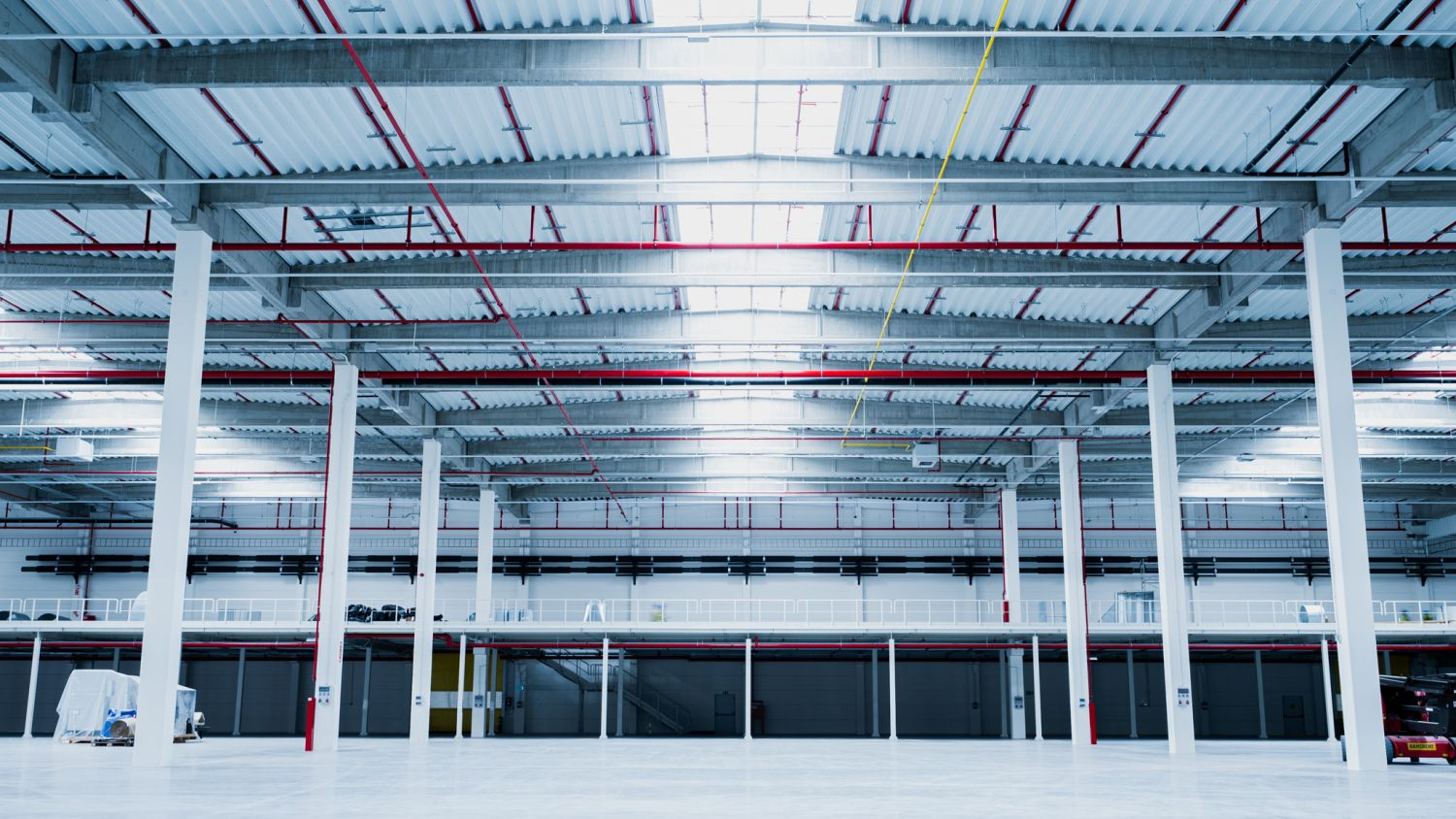
According to Savills' latest European logistics outlook, the take-up of industrial and logistics space across the continent totalled 37.5 million sqm in 2022. Despite ongoing economic uncertainty, this signifies a fall of only 6% on 2021’s total of 40.2 million sqm, which was a record high for the sector.
Following what was also a record-breaking H1, 2022 saw take-up decline in the second half of the year reaching 8.3 million sqm in Q4. However, Savills notes that this still signified a growth of 3% quarter-on-quarter despite a notable decline in transactions when compared to 2021, ultimately exceeding expectations.
Looking at specific locations, declines in take-up have been relatively mild across the board with the exception of large year-on-year increases in smaller markets like Dublin, Madrid and Romania. Most locations outperformed their five-year averages, even with a fall in take-up compared to Q4 2021. Portugal (+94%), Romania (+62%) and Spain (+57%) saw the strongest results, whilst France (-4%) was the only market to fall short.
Although quarterly take-up remains positive, many markets now look severely adversely impacted by economic headwinds in the context of their year-on-year growth, with Poland (-37%) and the UK (-47%) both seeing sharp falls relative to Q4. That said, Savills figures show that overall take-up in 2022 was still 18% higher than the five-year average.
This strong take-up has continued to put downward pressure on vacancy rates, falling from 3.6% at the end of 2021 to 3.1% in 2022, the lowest on record. Norway currently has a vacancy rate of 2.3%, whilst Prague has remained below 1% for the last three consecutive quarters. In contrast, Savills is now seeing vacancy rates start to rise in some markets including the UK, Budapest and Dublin, but off a historically low base.
As a result of competition for limited stock, prime rents across Europe grew by 11% in 2022. Annual growth was highest in Prague (+36%), Ile-de-France (+32%) and Upper Silesia (+22%) in Poland. However, other locations such as Vienna and Budapest saw virtually no increase.
Andrew Blennerhassett, associate in the pan-European industrial & logistics research team at Savills, comments: “Although we are seeing reduced levels of take-up across Europe, this slow-down will most likely be offset by the historically low levels of available space, which is likely to continue to drive rental growth in the short-term. With vacancy levels where they currently are, and no signs of an oversupply in the construction pipeline, there is very little danger that we will see a sharp correction in rents even if we were to face a stronger than forecast downturn.”
From an investment perspective, Savills data shows logistics remained an appealing asset class with transaction volumes totalling €54.5 billion, a fall of just 18% year-on-year. Similar to the occupational market, it must be noted that 2021 was a record-breaking year and therefore a decline was always likely, even without the economic volatility of the past 12 months.
Although declines were seen across Europe, countries with the largest quarter-on-quarter fall included Ireland (-92%), France (-66%), Norway (-62%) and the UK (-48%). Only three markets, Sweden (+79%), the Netherlands (+56%) and Denmark (+17), saw volumes increase. Consequently, prime yields moved out further with the European average reaching 4.69% in the last quarter, an increase of 40bps compared to Q3 2022 and nearly 70bps since 2021.
Yet, the appetite for logistics is reflected by its increasing share of total investment. Savills calculated that in 2017 logistics accounted for approximately 13% of total European investment volumes, increasing to 19% in 2022.
Marcus de Minckwitz, head of EMEA industrial & logistics at Savills, adds: “Whilst we saw considerable activity in the first half of 2022, there was a significant slowdown across Europe through the middle part of the year, largely due to rising interest rates and the ensuing increase in financing costs. Activity levels picked up again during Q4 2022 as the financial markets stabilised and, as we entered into 2023, both the key economic and market data and indicators were also much better than forecast, which has led to a significant improvement in sentiment.”
“As the year progresses, there are still headwinds to contend with and all eyes will be on the occupational markets moving forward. However, we believe the positive outlook we have seen so far will translate into continued occupier demand and vacancy rates remaining constrained.”
John Palmer, Head of Industrial Investment, Savills Poland, says: “The warehouse market in Poland is currently attracting the attention of many investors due to the high dynamics of rental growth, very low availability of space and shrinking development pipeline. The prospects for growth of the warehouse market in Poland are additionally strengthened by the increase in foreign direct investments, in particular in the context of the growing attractiveness of Poland as a destination for offshoring investments, including the dynamic growth of nearshoring in logistics and production. An additional comfort factor for forward funding investors is the stabilisation of construction costs and more certainty in building delivery times that is an essential component in calculating their rates of return.”



